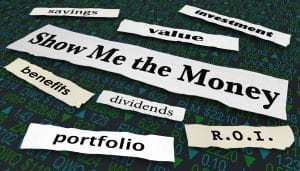
Chris Kuehl
Managing Director • Armada
Time to revisit the fable of Henny Penny? This tale of fear mongering is better known in the US as the story of Chicken Little. A quick review of the plot may be in order as we examine the prospects for the US economy in 2024 and beyond. It all starts when the excitable Henny Penny gets smacked on the head with a falling acorn and decides the sky is falling and that the world is coming to an end. She convinces a number of her barnyard buddies of this impending doom and they all set off to warn the King. In the process they meet Foxy Loxy who lures them all to his lair and proceeds to eat them. Moral of the story? Panic is usually unfounded and those that fall victim to it do not last very long.
We may be going through a Henny Penny moment as far as the economy is concerned. There have been some data releases that were somewhat disappointing and almost immediately there has been a desperate chorus of doom. The recession is imminent, the economic issues of the past few years are all going to manifest at once, the Fed is going to slash interest rates by summer but it will be too late and there will be a wave of layoffs and bankruptcies while at the same time inflation continues to surge and the economic starts to face stagflation. Are we really seeing the sky start to fall or have we just been conked on the noggin by an acorn?
The news from Q1 was certainly not as encouraging and robust as it had been. The GDP growth fell to 1.6% when the expectation had been for growth closer to 2.5%. The number of new jobs created was also lower than expected. The rate of unemployment rose slightly to 3.9%. The markets reacted immediately with an assumption the Fed would abruptly switch its position on rates and would start to lower them this summer. The media went nuts for several days with stories of impending crisis. Is this concern justified? Yes and no. Slower growth is not a good thing but it is important to note that most of the decline was attributed to a reduction in government spending as most of that pandemic cash is now gone and much of the planned infrastructure spending will not take place until later this year. Besides, 1.6% is not robust but it is far from recessionary. The latest estimate from GDPNow (Atlanta Fed) is Q2 growth between 3.5% and 3.9%. Of the four drivers of the economy – two are still very strong. That would be consumer spending and non-residential construction. The inventory build that played a major role in 2023 has faded but the government contribution should kick in again by Q2 and Q3.
The employment numbers still warn of worker shortage. There are still over 9 million job opportunities and approximately 6 million people ostensibly seeking work. The problem is that those 6 million lack the appropriate skills or motivation to seek work. There are many ways to stay out of the formal workforce – everything from taking plenty of government aid, the option of the gig economy, participation in the illegal economy and so on. The fact is that jobless numbers are at record lows, the quit rate as measured by JOLTS is still high and most businesses are still complaining about lack of workers. The shortage of people has led to much higher wage demands and wage driven inflation is near 5.0% while the general rate of inflation is at 2.3%. The one danger to remain aware of is that of stagflation. This is when there are simultaneously high levels of inflation and slow growth. This generally takes place when wages are driving the inflation numbers.
The key to whether this year continues to see growth is the consumer – as it nearly always is. There are three levels of consumer at the moment and their reaction to the economy differs. The upper third has barely felt the drag and continues to spend. They are mostly upset with inflation as it has reduced the value of their money (as it has everybody’s). The bottom third of earners have been hurt the most (by both inflation and the slowdown). The majority (over 85%) are said to be living paycheck to paycheck and these are the people who lack the leverage to adjust their wages. The middle third is hanging on as long as they have a secure job and the ability to adjust their earnings and this will be the sector that will bear close examination for the rest of this year and into next.
Recent Posts
- Stability in Uncertain Times: Insights on Small Business Performance and Market Trends March 26, 2025
- Economic Reconnaissance | Now Comes the Hard Part February 3, 2025
- How Can the CMI be Used for Performance Insights? January 6, 2025
- Economic Reconnaissance | Economic Growth During the Next Presidency December 3, 2024
- How Credit Managers Can Step into Executive Leadership November 13, 2024
- New California law extends consumer debt protections to small businesses October 15, 2024








